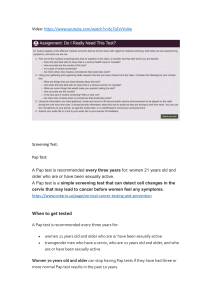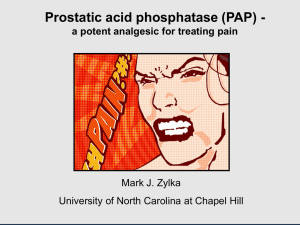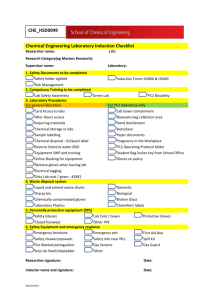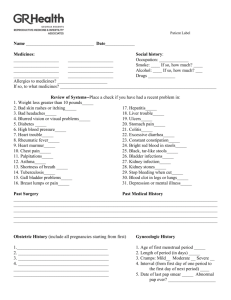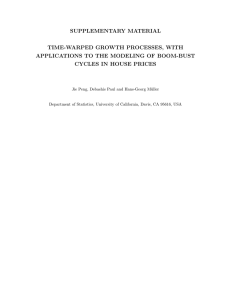Pokeweed Antiviral Project - POKEWEED-ANTIVIRAL
advertisement
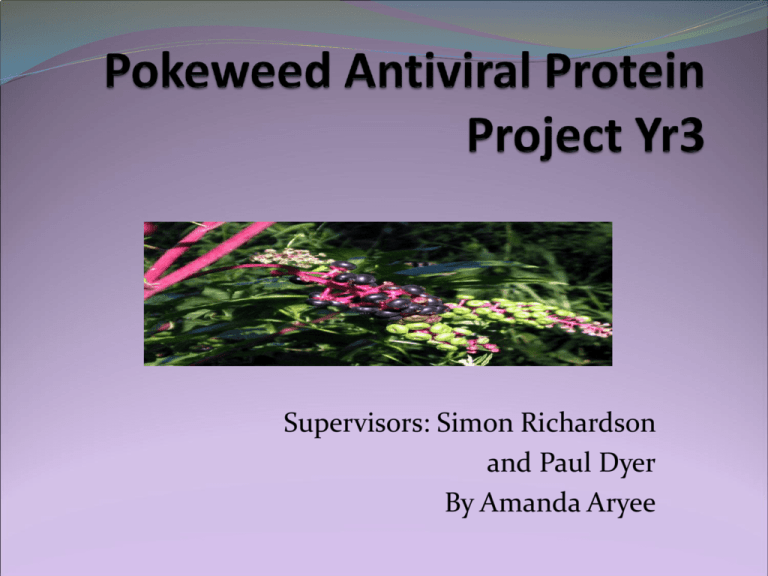
Supervisors: Simon Richardson and Paul Dyer By Amanda Aryee Background A plant containing type 1 ribosome inactivating protein (RIP) PAP (Pokeweed antiviral protein). It catalytically inactivates ribosome's, thus inhibiting protein synthesis. Depurination in ribosome's shown to occur in functionally equivalent positions in prokaryotes and eukaryotes. Current drug delivery systems, although effective, have their advantages and disadvantages and can be improved. Methodology Initially PAP will be sub cloned: recombinant PCR will be used to mutate the PAP sequence creating two combinations; 1. Mutated (point mutation) R68G with active site intact. 2. Mutated R68G with mutated active site. Expression by bacterial expression cassette: pET151/DTOPO Evaluation of protein by Western Blotting: an analytical technique using antibody protein binding to detect specific proteins. Evaluations •A protein antibodyantibody sandwich is made. •Secondary antibody has horse radish peroxidase enzyme which converts a luminol substrate to a light releasing substance. Its intensity helps determine the volume of protein relative to other spots •From this it can be evaluated whether optimal expression and cloning has occurred Likely Outcomes Although there are drawbacks the hopeful outcomes are; Improved PAP production in pET151/DTOPO when R68G is cloned. Optimal conditions obtained for two cloning types. Modification of PAP sequence, for least cytotoxicity to cell of drug delivery. R68G mutation will enhance this. The expected result is for the best possible sequence combination which allows for non damaging drug delivery. The second clone will be less cytotoxic thus more effective.
